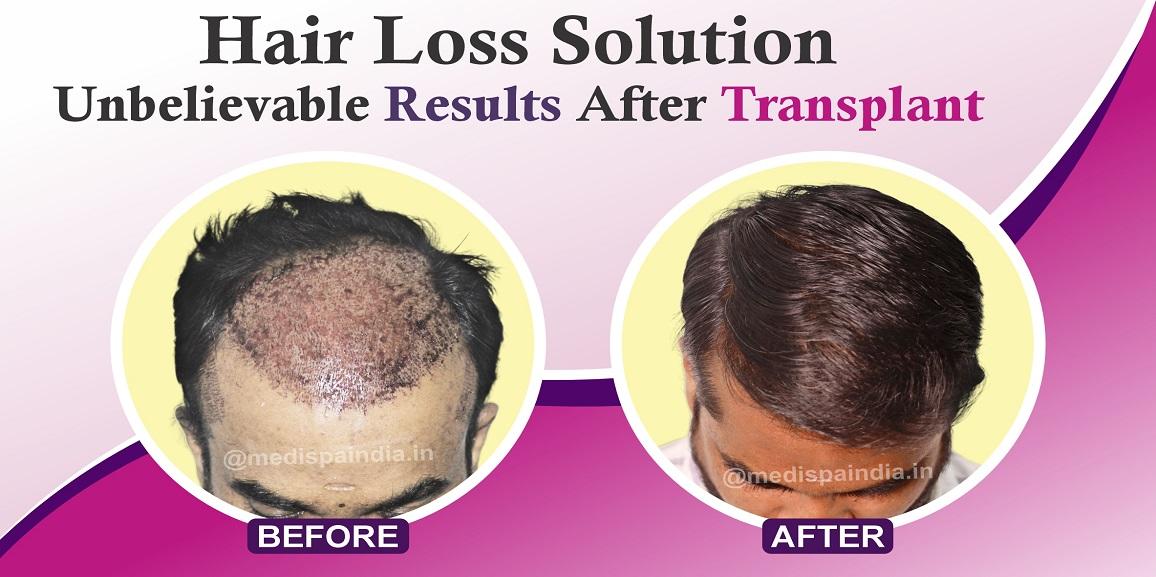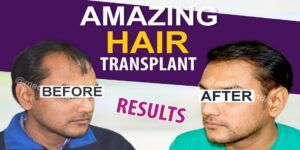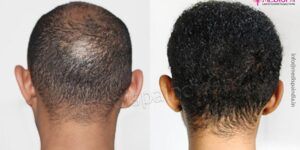
The hair transplant procedure involves extracting hair grafts from the donor area and transplanting them to the desired bald area, while carefully designing the hairline to achieve natural-looking results. By utilizing hair grafts from other areas of the body with sufficient hair density, the restorative process fills in the bald spot. The donor area, chosen based on the durability or DHT resistance of the hair roots, is where the hair grafts are harvested for the transplant.
With advancements in technology and techniques, it is now possible to cover a larger area of the scalp with a greater amount of hair. These more sophisticated procedures have increased the yield of hair grafts from the donor area, allowing for high density hair transplants.
The hair transplant procedure has recently become popular due to its impressive results and long-lasting effects, making it the only technique that can permanently solve your hair loss problem in one go. Nowadays, the hair transplant surgery is successful in treating severe baldness in a single session, although there are instances where additional visits may be necessary even if the initial transplant was successful. If the procedure is performed carefully during the first visit or subsequent visits, it is indeed possible to have multiple sessions for hair transplant. With a skilled surgeon making conservative decisions, up to three visits can be accommodated.
When it comes to success and outstanding outcomes, hair transplant in Delhi has made significant progress. The city has amazed the country with its high patient volume and success rate in several facilities. You will be pleased to know that the hair transplant cost in Delhi is very reasonable.
Thanks to its excellent facilities, exceptional hair transplant surgeons, and top-notch staff, Medispa hair transplant clinic is ranked among the few exceptional clinics at the top. Instead of just taking our word for it, take a look at our success stories – they will truly astonish you. Our dedication and commitment to providing the best have made us the leading hair transplant clinic in the country.
Dr. Suneet Soni, the esteemed founder of Medispa hair transplant clinic, has garnered global acclaim for his remarkable achievements and top-notch hair transplant procedures. His unparalleled skills and innovative approach in crafting hairlines that appear entirely authentic have earned him praise from all corners of the world. With his astute decision-making, you can rest assured that opting for his services will provide you with long-lasting benefits, effectively resolving your hair loss concerns.
When can we go for second hair transplant?
Let us delve into a few scenarios that may necessitate a second hair transplant.
- In situations where the previous session results are unsatisfactory, it is possible that the hair density achieved may not meet your expectations. This can occur if the procedure was not performed by an experienced professional or if your transplanted hair follicles suffered significant damage. In such cases, it is advisable to consider undergoing another session of hair transplant in order to achieve more desirable outcomes. However, it is important to note that there are some patients who have unrealistic expectations that cannot be met, and they may require proper counseling.
- When experiencing extensive hair loss, there are instances where a single session may not yield satisfactory results. In these cases, multiple visits may be necessary in order to achieve pleasant and acceptable outcomes. It is important to consider undergoing a second hair transplant in order to address the extent of hair loss effectively.
- In some instances of genetic baldness, hair loss can continue to worsen and result in bald patches alongside areas with remaining natural hair. To achieve satisfactory hair growth and desirable results, multiple visits may be necessary. If you are seeking a reputable surgeon who specializes in hair transplant procedures, we recommend visiting Medispa clinic for hair transplant in Delhi and Jaipur.
Why are additional sessions of hair transplant necessary?
Hair loss caused by genetic factors is a continuous process and cannot be halted by any means. Despite various remedies claiming to stop hair fall, none of them have proven to be effective. Hair transplant is often misunderstood as a procedure that can stop hair fall, but in reality, there is no such procedure or remedy that can achieve this, including hair transplant. Additionally, hair transplant is not a regenerative procedure that can restore lost hair follicles. Once hair follicles are lost due to hair loss, they cannot be regrown. Therefore, further sessions of hair transplant may be required to cover the expanding bald area caused by the loss of natural hair. This is especially true for young individuals who experience a higher rate of hair loss, resulting in the need for multiple hair transplant sessions. When the bald area is extensive, it is not possible to cover it in a single session, necessitating additional visits to achieve the desired results.
How to achieve it successfully?
There are methods available to ensure that multiple sessions of hair transplant can be performed without compromising the safety of the donor area and reducing the density of the hair.
Preserving the grafts is of utmost importance, and all efforts should be made to minimize damage. Selecting a skilled hair transplant surgeon is crucial, as they can minimize the damage during the harvesting and implantation process, resulting in the preservation of a larger number of grafts. Additionally, the supporting staff should handle the follicular grafts carefully to minimize any potential damage.
The FUT hair transplant technique offers an advantage over the FUE technique in terms of graft preservation and the ability to perform multiple sessions. This technique involves harvesting a thin strip from the back and side of the head, leaving a safe donor area for future sessions. Another approach is the combination technique of FUT and FUE, which allows for the transplantation of more than 4000 grafts in a single session while still preserving grafts for future sessions.





